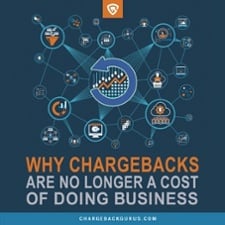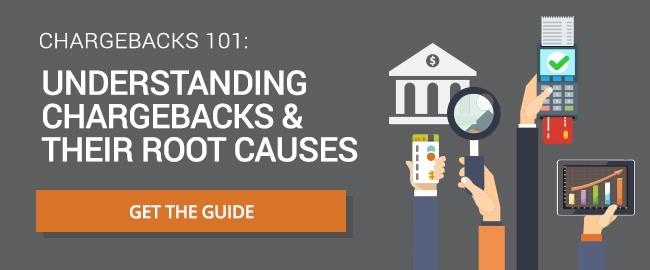The Three Types of Payment Reversals
As much as they might prefer otherwise, every merchant had to deal with payment reversals now and then. Mistakes happen, and when a merchant fails to deliver what the customer paid for, it's their duty to provide a refund. In other cases, merchants may choose to reverse a payment after an error in processing, or simply to satisfy an unhappy customer. Of course, these kinds of payment reversals are voluntary, but there's another kind that isn't: chargebacks.
Each type of payment reversal has its own rules, restrictions, and costs. In order to make sure their businesses operate with maximum efficiency, merchants need to have a thorough understanding of their similarities and differences. Let's break down the different types of payment reversals, how each of them works, and how merchants can best use them to increase customer satisfaction and protect their bottom line.
- What Is a Payment Reversal?
- What Is an Authorization Reversal?
- What Is a Refund?
- What Is a Chargeback?
- How Do You Prevent Payment Reversals?
- Is a chargeback a reversal?
- How long do pending authorizations take?
- Can a cardholder cancel a pre-authorization?
- Can an EFT be reversed?
What Is a Payment Reversal?
Different situations call for different types of payment reversals. Some have minimal impact on the merchant’s bottom line, and others can be quite costly. Depending on the type, payment reversals may be initiated by the customer, the merchant, the card network, the issuing bank, or the acquiring bank. While a payment reversal might never be desirable, they’re not all equally bad for the merchant.
When done early enough, a payment reversal can be minimally costly to the merchant while satisfying the customer and eliminating the chance of receiving a more expensive and damaging form of reversal later on.
There are three types of payment reversals:
- Authorization reversals
- Refunds
- Chargebacks
Good policies, processes, and customer service can help you reduce instances of all three types, but the ones you really want to avoid are chargebacks. They’re the most costly by far, and they can harm your business in more ways than one.
By applying authorization reversals or refunds at the right time, you can avoid chargebacks and minimize the damage to your revenue and reputation that payment disputes can cause. But first, it’s important to understand how these reversals differ.
What Is an Authorization Reversal?
 Essentially, it's an electronic communication to the issuing bank, sent through your payment processing system, which instructs them to reverse a transaction that was just authorized.
Essentially, it's an electronic communication to the issuing bank, sent through your payment processing system, which instructs them to reverse a transaction that was just authorized.
If a customer makes a purchase and changes their mind a short while later because they want to return the item or use a different payment method, you may be able to process an authorization reversal instead of a refund.
This is preferable because you won’t have to pay interchange fees the way you would if you processed a credit to refund a fully settled transaction. If you have the option to provide an authorization reversal, it’s always the cheapest, fastest, and best way to give the customer their money back.
Authorization reversals can also increase customer satisfaction. Customers are always happiest when the money never leaves their account, especially in the case of a transaction made in error. A separate refund transaction means the money might not be made available to them right away.
Accounting is also made easier when an authorization reversal is used instead of another kind of payment reversal, since there's no gap between receipt of revenue and a reversal of payment to the customer.
One of the most common situations in which merchants use authorization reversals is one that doesn't even directly involve the customer. If a customer is accidentally charged the wrong amount or if a charge is processed more than once for the same purchase, an authorization reversal can serve as a quick and easy way to reverse the erroneous transaction. More often than not, the customer will never even know about the mistake.
What Is a Refund?
A refund is a credit transaction that returns money from the merchant to the customer. In terms of transaction data and behind-the-scenes processing, nothing necessarily connects the refund to the original purchase.
When a transaction has already been settled, an authorization reversal is no longer an option. In situations like these, you can provide a refund, which is processed as a new and separate transaction that takes funds from the merchant account and credits it back to the customer’s payment card.
Refunds have to go through the same settlement and clearing process as other transactions, which means the customer doesn’t always get their money back instantly. The merchant is also obligated to pay interchange fees on every credit transaction, the same as they would if they were processing a regular charge.
Although a refund will usually take a few days to fully process, using a return authorization allows the customer to see the pending credit in their account almost immediately, reducing the chance that they'll get impatient and file a chargeback under the assumption that a promised refund isn't coming.
Because of their ability to prevent chargebacks, both Visa and Mastercard have mandated the use of these authorizations for all refunds.
When a customer is unhappy, a refund is often the best (and sometimes only) way to resolve the situation to their satisfaction. For this reason, it’s always a good idea to have a generous refund policy and offer attentive and compassionate customer service when a customer comes to you with a problem. Providing a full and prompt refund is your best chance at salvaging the relationship with a dissatisfied customer.
Determining what makes for a generous refund policy depends on the market you’re in, the kind of products you sell, and general industry trends. In recent years, the trend in e-commerce has been to entice customers with easy, flexible, no-questions-asked return policies. It’s usually a good idea to periodically update your policies to be at least as generous as average, if not more so.
For example, it used to be standard practice in e-commerce for the customer to pay the return shipping on a product they want to return, but these days customers expect the merchant to pay for that as well.
Returnless refunds are also becoming more common, with the merchant refunding the customer without expecting the purchased product to be returned. While in some cases this is simply due to the cost of return shipping being higher than the value of the returned product, an increasing number of e-commerce merchants, especially those on Amazon, are offering this as a standard policy.
If you deny a customer a refund for any reason, there are two avenues that customer might take. Some will simply accept the denial and move on. However, there is always a high risk that the customer will contact their bank and demand a chargeback.
What Is a Chargeback?
Under the Fair Credit Billing Act of 1974, all payment card issuers must offer a chargeback process to remedy fraud and abuse. If a customer brings a valid dispute claim to their bank, a chargeback will result.
 Chargebacks are more costly than refunds—they carry additional fees that the merchant must pay. On a small purchase, the chargeback fee can be much greater than the original payment amount. But the fees aren’t even the worst thing about chargebacks. The real danger with chargebacks is that they can cause you to lose your merchant account.
Chargebacks are more costly than refunds—they carry additional fees that the merchant must pay. On a small purchase, the chargeback fee can be much greater than the original payment amount. But the fees aren’t even the worst thing about chargebacks. The real danger with chargebacks is that they can cause you to lose your merchant account.
The major card networks task their acquiring banks with monitoring chargeback-to-transaction ratios and establishing thresholds for “excessive” chargeback activity, often no higher than 1%. They do this to prevent fraudulent and reckless merchants from abusing the system and causing consumers to lose confidence in the safety of payment card transactions.
However, even honest merchants can end up with a chargeback problem that becomes difficult to manage. When a merchant exceeds their acceptable chargeback threshold, their acquirers and payment processors will take action to rectify things. This starts with enrolling the merchant in a remediation program, but the consequences can escalate swiftly, ending in termination of the merchant account.
Without an active merchant account, you can no longer accept credit card payments. There are “high risk” processors that will work with merchants caught in that situation, but they can be very expensive and sometimes unreliable.
How Do You Prevent Payment Reversals?
One way to reduce payment reversals is to make sure your transactions are being submitted quickly. If you're waiting even a day or two to submit a transaction, the cardholder could be caught with insufficient funds after assuming the transaction already went through, or they might forget what the charge was for and file a chargeback.
Merchants can avoid chargebacks by taking the opportunity to provide authorization reversals and refunds whenever they are needed—but this only works when the customer notifies you of a problem.
Erroneous chargebacks may occur when the customer doesn’t recognize a charge on their bank statement. Clear merchant descriptors, with your phone number and website URL included, can help to avoid this. Make sure the name in the descriptor matches the name on your storefront.
Some chargebacks are the result of fraud and can be prevented with AVS and CVV matching, authentication tools like 3-D Secure, and fraud protection software.
When customers make false claims and obtain chargebacks that do not have a legitimate basis, this is called friendly fraud.
With compelling evidence that disproves these claims, merchants can fight friendly fraud chargebacks and win back their revenue.
There are situations in which each of these different payment reversal types will be required, but merchants should do everything in their power to avoid chargebacks. Authorization reversals and refunds may cost you some revenue, but they can’t threaten your very ability to process payment card transactions the way chargebacks can.
Every merchant needs a strategy for preventing and fighting chargebacks and the acts of fraud that cause them. A big part of that strategy is knowing when to offer voluntary payment reversals to keep customers happy and avoid disputes down the line.
The Role of Communication in Preventing Payment Reversals
Clear Transaction Descriptors
Responsive Customer Service
Educate Customers on Refund Policies
Utilize Fraud Prevention Tools
Combat Friendly Fraud
FAQ
Is a chargeback a reversal?
How long do pending authorizations take?
Can a cardholder cancel a pre-authorization?
Can an EFT be reversed?
Thanks for following the Chargeback Gurus blog. Feel free to submit topic suggestions, questions or requests for advice to: win@chargebackgurus.com



